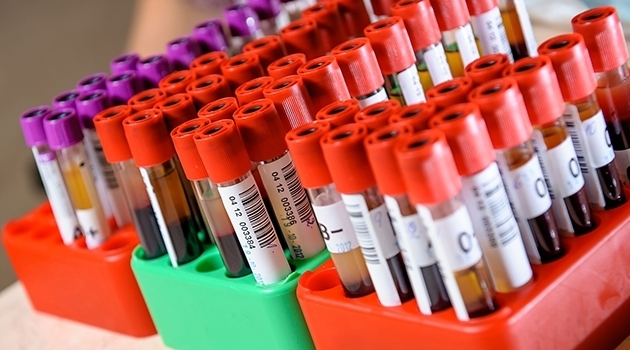Biomarkers help identify risks for COVID-19 patients
In a new study, Uppsala researchers have found that two biomarkers in blood are more common in severely ills COVID-19 patients that develop muscle weakness during intensive care. This finding can allow preventive treatment to be given earlier.
“Our results show that the levels of two specific biomarkers in blood, neurofilament light chain (NfL) and glial fibrillary acidic protein (GFAp), which signal damage to the nervous system, were higher at an early stage in the group of COVID-19 patients receiving intensive care and that developed muscle weakness. These patients also had longer care times, higher risk of blood clots and greater need of respirator support over a long period. The hope is that the new findings can lead to at-risk patients being identified earlier and that they can more quickly receive preventive treatment,” says Anna Rostedt Punga, a professor of clinical neurophysiology at Uppsala University and a senior physician at Uppsala University Hospital.
Studied patients in intensive care units
In the study, Uppsala researchers followed the progress of 111 COVID-19 patients being treated in intensive care units (ICU) during the period March–June 2020 and that developed muscle weakness. The researchers looked at neurophysiological findings and blood biomarkers in patients.
“Eleven patients developed muscle weakness, known as critical illness myopathy (CIM) or critical illness neuropathy (CIN). These patients received intensive care over a longer period. They also had a higher rate of blood clots and needed respiratory care more often over a two-week period.”
Signals nerve damage
“The study shows that the levels of two specific blood biomarkers, neurofilament light chain (NfL) and glial fibrillary acidic protein (GFAp), which signal nerve damage, were higher at an early stage in the patient group receiving intensive care and that developed muscle weakness. According to Anna Rostedt Punga, this supports the idea that these are possible biomarkers for development of CIN and CIM.
Participating researchers in the study: Anna Rostedt Punga, Robert Frithiof, Elham Rostami, Eva Kumlien, Johan Virhammar, David Fällmar, Michael Hultström, Miklós Lipcey, Nicholas Ashton, Kaj Blennow, Henrik Zetterberg.
Anna Malmberg
Publication:
The study “Critical illness polyneuropathy, myopathy and neuronal biomarkers in covid-19 patients: a prospective study” has been published in Clinical Neurophysiology.

